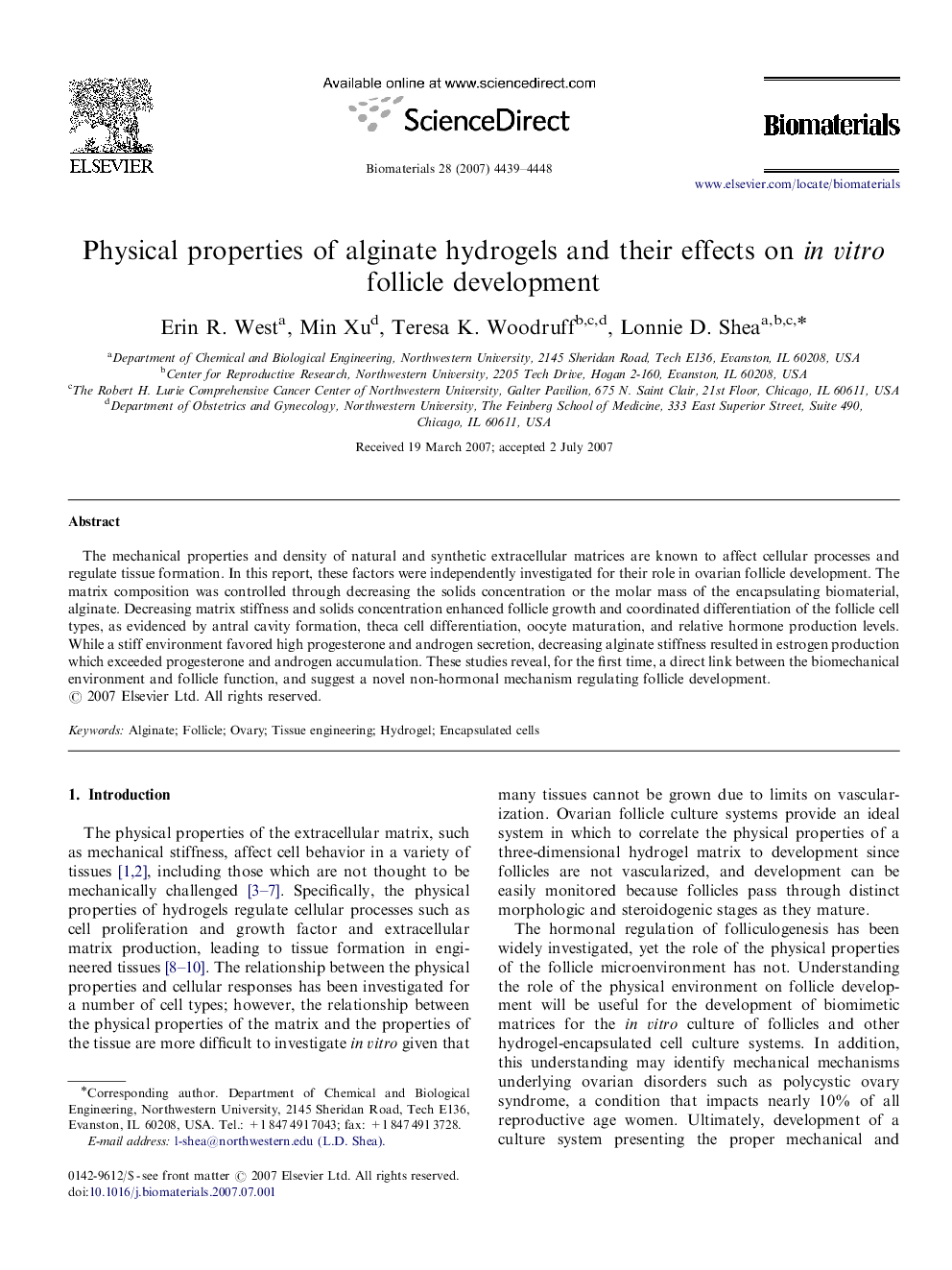| Article ID | Journal | Published Year | Pages | File Type |
|---|---|---|---|---|
| 10746 | Biomaterials | 2007 | 10 Pages |
The mechanical properties and density of natural and synthetic extracellular matrices are known to affect cellular processes and regulate tissue formation. In this report, these factors were independently investigated for their role in ovarian follicle development. The matrix composition was controlled through decreasing the solids concentration or the molar mass of the encapsulating biomaterial, alginate. Decreasing matrix stiffness and solids concentration enhanced follicle growth and coordinated differentiation of the follicle cell types, as evidenced by antral cavity formation, theca cell differentiation, oocyte maturation, and relative hormone production levels. While a stiff environment favored high progesterone and androgen secretion, decreasing alginate stiffness resulted in estrogen production which exceeded progesterone and androgen accumulation. These studies reveal, for the first time, a direct link between the biomechanical environment and follicle function, and suggest a novel non-hormonal mechanism regulating follicle development.
